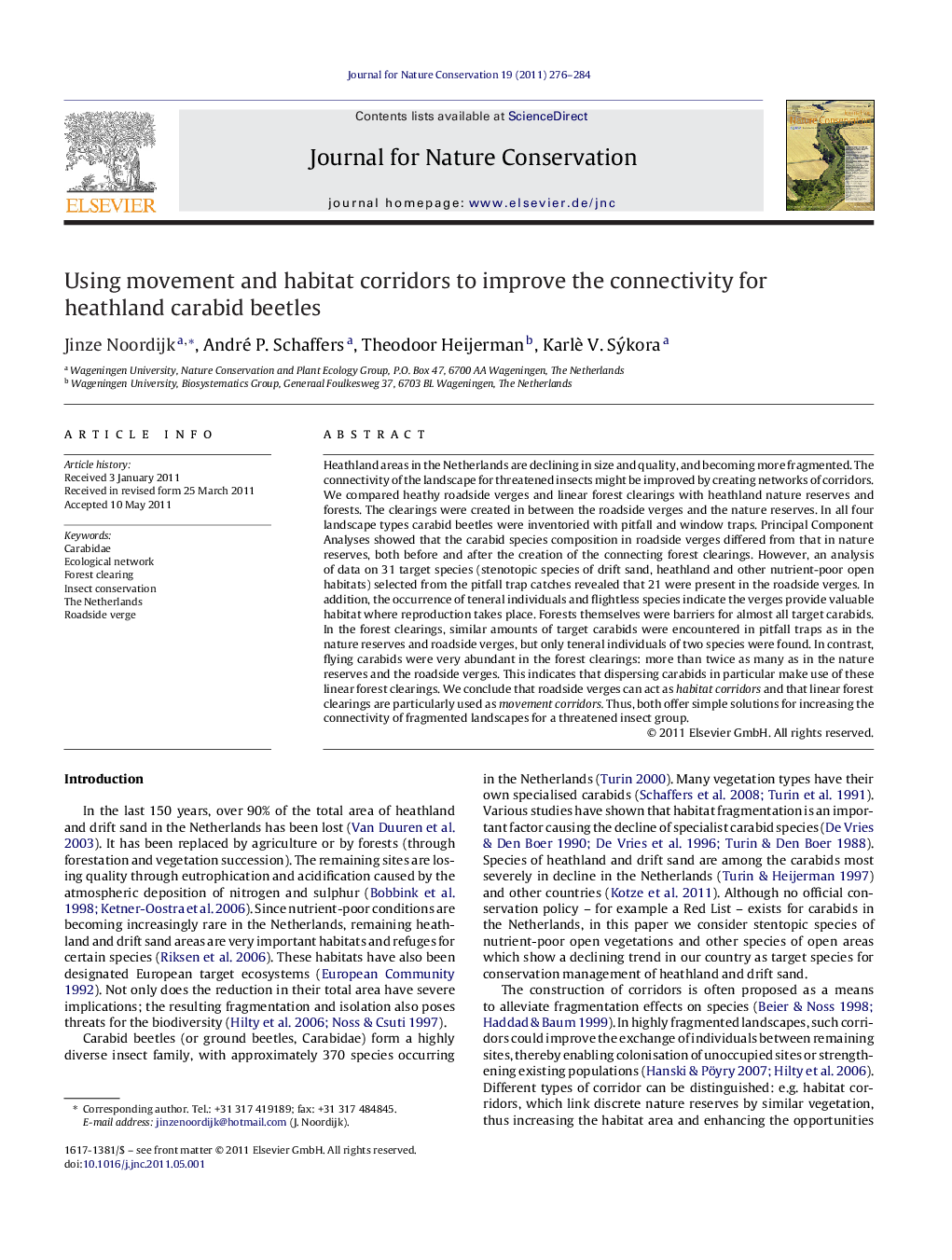| Article ID | Journal | Published Year | Pages | File Type |
|---|---|---|---|---|
| 4400071 | Journal for Nature Conservation | 2011 | 9 Pages |
Abstract
Heathland areas in the Netherlands are declining in size and quality, and becoming more fragmented. The connectivity of the landscape for threatened insects might be improved by creating networks of corridors. We compared heathy roadside verges and linear forest clearings with heathland nature reserves and forests. The clearings were created in between the roadside verges and the nature reserves. In all four landscape types carabid beetles were inventoried with pitfall and window traps. Principal Component Analyses showed that the carabid species composition in roadside verges differed from that in nature reserves, both before and after the creation of the connecting forest clearings. However, an analysis of data on 31 target species (stenotopic species of drift sand, heathland and other nutrient-poor open habitats) selected from the pitfall trap catches revealed that 21 were present in the roadside verges. In addition, the occurrence of teneral individuals and flightless species indicate the verges provide valuable habitat where reproduction takes place. Forests themselves were barriers for almost all target carabids. In the forest clearings, similar amounts of target carabids were encountered in pitfall traps as in the nature reserves and roadside verges, but only teneral individuals of two species were found. In contrast, flying carabids were very abundant in the forest clearings: more than twice as many as in the nature reserves and the roadside verges. This indicates that dispersing carabids in particular make use of these linear forest clearings. We conclude that roadside verges can act as habitat corridors and that linear forest clearings are particularly used as movement corridors. Thus, both offer simple solutions for increasing the connectivity of fragmented landscapes for a threatened insect group.
Related Topics
Physical Sciences and Engineering
Earth and Planetary Sciences
Earth and Planetary Sciences (General)
Authors
Jinze Noordijk, André P. Schaffers, Theodoor Heijerman, Karlè V. Sýkora,
